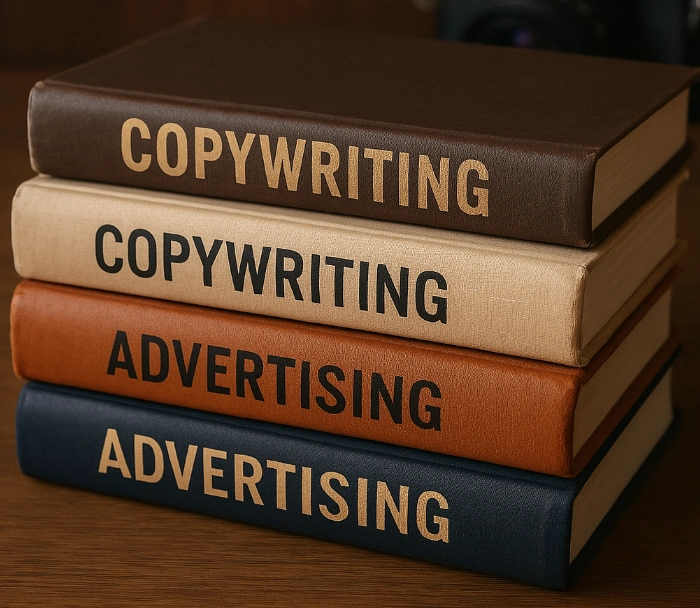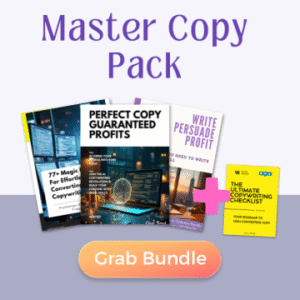The world of copywriting books advertising resources has expanded dramatically over the past decade. Every skilled copywriter knows that words sell, persuade, and transform business results. The right copywriting books can elevate your advertising campaigns from forgettable to legendary. I’ve spent fifteen years crafting copy for global brands and teaching copywriting principles to marketing teams. Great advertising copy makes the difference between campaigns that flop and those that soar. This guide covers essential classics, digital-age techniques, specialized approaches, and practical applications from the best copywriting books. You’ll discover books that address everything from timeless persuasion principles to cutting-edge digital advertising strategies.
Timeless classics that shaped modern advertising
The foundation of effective advertising copy comes from pioneering works that established core principles. These books created frameworks we still use today despite their publication dates. Claude Hopkins wrote “Scientific Advertising” in 1923, yet his testing methodologies remain remarkably relevant. Hopkins introduced the concept of measuring advertising performance through direct response techniques. His emphasis on benefits over features revolutionized how copywriters approach consumer psychology.
David Ogilvy’s “Confessions of an Advertising Man” delivers practical wisdom from advertising’s golden era. Ogilvy shares specific headline formulas and image selection strategies that drive consumer action. His insistence on research-backed decisions changed how agencies develop campaigns forever. The book reveals how Ogilvy created iconic campaigns for Rolls-Royce and Hathaway shirts.
“Breakthrough Advertising” by Eugene Schwartz breaks down the psychological states of market awareness. Schwartz teaches copywriters how to identify market sophistication and match messaging accordingly. This approach helps advertisers connect with audiences at any stage of market development. Many consider this the most valuable copywriting book ever written despite its limited availability.
Robert Collier’s “The Robert Collier Letter Book” showcases persuasive letter formulas that adapt beautifully to modern contexts. Collier demonstrates how to enter conversations already happening in your prospect’s mind. His examples feel surprisingly contemporary despite their early 20th-century origins. Direct response copywriters still study his principles for email campaigns and landing pages.
These classics maintain their relevance because human psychology changes far slower than technology. The core desires, fears, and motivations that drove purchases a century ago still apply. Modern advertising channels may evolve rapidly, but persuasion fundamentals remain constant. These books provide time-tested principles that work across all advertising mediums.
Related articles:
- 7 Best AI Tools for Writing Marketing Copy
- Top Books That Will Transform Your copywriting Skills
- How to Start Learning Copywriting “Beginner’s Roadmap”
- Best Free Copywriting Books
Digital advertising copywriting essentials
The digital landscape demands specialized knowledge for effective copywriting across new platforms. “Ca$hvertising” by Drew Eric Whitman bridges classic techniques with modern digital application brilliantly. Whitman distills psychological triggers into actionable formulas for online and offline advertising. His “Life-Force 8” psychological drivers help copywriters tap into universal human motivations.
“Web Copy That Sells” by Maria Veloso addresses the unique challenges of digital engagement. Veloso shows how to adapt traditional copy approaches to meet online attention spans. Her frameworks for creating compelling calls-to-action improve conversion rates significantly. The book includes specific techniques for email marketing and landing page optimization.
Ann Handley’s “Everybody Writes” provides practical guidance for content marketing and social media. Handley emphasizes clarity and personality in an environment of information overload. Her approach helps brands develop consistent voice across multiple digital touchpoints. The book serves as both style guide and strategic framework.
“Conversion Copywriting” by Joanna Wiebe teaches data-driven approaches to digital copy optimization. Wiebe demonstrates how to research customer language for more persuasive digital copy. Her Voice of Customer methodology transforms bland copy into high-converting messaging. This book bridges the gap between copywriting art and conversion science.
Digital advertising books acknowledge shorter attention spans and multiple device contexts. They incorporate traditional persuasion tactics while addressing unique digital challenges. These resources help copywriters create seamless experiences across various platform requirements. The best digital copywriting books encourage testing and iteration based on performance data.
Specialized copywriting approaches for different industries
Different market segments require tailored copywriting approaches for maximum effectiveness. “Building a StoryBrand” by Donald Miller offers powerful frameworks for clarifying brand messaging. Miller helps businesses position their customers as heroes in compelling brand narratives. This approach works particularly well for small businesses and service providers.
“The Copywriter’s Handbook” by Bob Bly contains specialized sections for different advertising formats. Bly provides template structures for everything from brochures to video scripts. His industry-specific guidance helps copywriters adapt to various client needs effortlessly. The book includes pricing guidance for freelance copywriters as well.
Fashion and luxury advertising demands unique approaches covered in “Fashion Copywriting” by Herschell Gordon Lewis. Lewis demonstrates how emotional appeals work differently in aspirational market segments. His techniques emphasize exclusivity and lifestyle enhancement over traditional benefits. The book shows copywriters how to create desire through carefully crafted language.
B2B copywriting finds thorough treatment in “The Business-to-Business Marketing Handbook” by Robert W. Bly. Bly addresses the multi-stakeholder nature of B2B purchasing decisions comprehensively. His frameworks account for longer sales cycles and more rational decision processes. The book includes specialized approaches for various B2B marketing channels.
Technical product advertising receives expert coverage in “Made to Stick” by Chip and Dan Heath. The Heath brothers show how to make complex information understandable and memorable. Their SUCCESS principles help transform technical features into compelling advantages. This approach bridges the gap between technical accuracy and emotional engagement.
These specialized resources help copywriters adapt core principles to specific contexts. They acknowledge the unique vocabulary and concerns of different market segments. Specialized books provide shortcuts to understanding niche audience psychology. The most valuable specialized books include abundant examples from relevant industries.
Putting theory into practice
Knowledge from copywriting books becomes valuable only through consistent application. “The Boron Letters” by Gary Halbert shows copywriters how to develop practical writing habits. Halbert wrote these letters to his son from prison, sharing hard-earned wisdom. His emphasis on market research fundamentally changes how readers approach projects.
“Hey Whipple, Squeeze This” by Luke Sullivan delivers practical advice for agency copywriters. Sullivan includes exercises and assignments that develop real-world copywriting muscles. The book features case studies showing the evolution from creative brief to final campaign. Sullivan’s humor makes the learning process enjoyable and memorable.
“The Adweek Copywriting Handbook” by Joseph Sugarman teaches practical techniques for generating emotional responses. Sugarman’s “slippery slide” concept helps copywriters create irresistible momentum in their writing. His approach to problem-solution structures creates immediately usable templates. The book includes before-and-after examples that demonstrate key principles.
Practical application requires tools that complement theoretical knowledge from books. Hemingway Editor helps copywriters identify overly complex sentences and passive voice issues. The CoSchedule Headline Analyzer scores headlines based on emotional impact and clarity. Heat mapping tools like Hotjar show how readers interact with your copy.
Successful copywriters consistently translate book knowledge into client results. Nike’s “Just Do It” campaign demonstrates the power of benefits-focused emotional brevity. Apple’s product copy shows how simplicity creates desire better than technical specifications. These real-world successes begin with principles found in quality copywriting books.
Starting your copywriting journey
New copywriters need accessible resources that build fundamental skills systematically. “The Copywriter’s Handbook” provides an ideal starting point for advertising copy beginners. This comprehensive resource covers core principles without overwhelming new practitioners. The handbook includes practical exercises that build confidence through practice.
“Copywriting Secrets” by Jim Edwards offers step-by-step formulas perfect for beginners. Edwards breaks complex concepts into actionable templates anyone can follow. His PASORS framework helps new copywriters create persuasive content quickly. The book includes online resources that complement the core material effectively.
“Words That Sell” by Richard Bayan serves as an indispensable reference for expanding vocabulary. Bayan organizes powerful words and phrases by emotional effect and purpose. New copywriters find this thesaurus-like approach immediately valuable for client work. The book helps overcome common vocabulary limitations in early copywriting attempts.
I recommend beginners start with “Copywriting Secrets” before tackling classics like Ogilvy. This creates a foundation that makes more advanced concepts easier to absorb. New copywriters should practice principles from each book before moving to next resources. This approach builds skills progressively without creating overwhelm.
Complementary resources include the Copyblogger website and The Copywriter Club podcast. These free resources provide current examples and industry discussions. Online communities like Reddit’s r/copywriting offer feedback and support. Professional organizations like American Writers & Artists Inc. provide structured learning paths.
What the experts recommend
Top advertising professionals consistently recommend certain books throughout their careers. Seth Godin endorses “Permission Marketing” as essential for modern advertising contexts. “This book fundamentally changed how I approach consumer attention and respect,” says Godin. His emphasis on earning attention applies across all copywriting channels.
Agency creative directors frequently assign “Hey Whipple, Squeeze This” to junior copywriters. “Sullivan’s book bridges academic theory and agency reality perfectly,” notes Ogilvy creative director Emma Williams. The book appears on required reading lists at top advertising agencies worldwide. Its practical approach complements theoretical knowledge from university programs.
The American Advertising Federation includes “Ogilvy on Advertising” in their recommended curriculum. University advertising programs feature Ogilvy’s work alongside Hopkins and Caples consistently. Advertising pioneer Alex Bogusky recommends “Breakthrough Advertising” as his desert island book. “Schwartz understood market sophistication before anyone else,” Bogusky explains.
Professional copywriters mention “The Copywriter’s Handbook” most frequently in industry surveys. The comprehensive nature of this resource makes it valuable throughout career progression. Professionals appreciate its balance of principles and practical application examples. Many successful copywriters reread this book annually to refresh core concepts.
Academic institutions including Syracuse University and Miami Ad School feature these recommendations. Their curricula incorporate principles from these books into hands-on projects. This academic endorsement confirms the enduring value of these copywriting resources. Students who master these books typically produce stronger portfolio work.
Beyond the bookshelf
The journey toward copywriting mastery extends beyond books into continuous learning practices. Regular exposure to award-winning advertising campaigns trains your eye for excellence. The Cannes Lions archive provides examples of world-class copywriting across categories. Study these examples to understand what elevates certain copy above competitors.
Professional development continues through masterminds and specialized training programs. The Copy Chief community offers ongoing support and feedback from professionals. AWAI certification programs provide structured advancement for serious practitioners. These resources help copywriters implement book knowledge more effectively.
Copy analysis becomes a critical habit for advanced copywriting professionals. Dedicated copywriters maintain swipe files of compelling advertisements for reference. This practice helps identify patterns in successful copy across industries. Regular analysis sharpens your ability to identify effective techniques quickly.
I encourage readers to join professional organizations for networking opportunities. The Professional Writers Alliance connects copywriters with potential clients and mentors. These connections often provide insights books cannot capture adequately. Shared experiences with other practitioners accelerate professional development significantly.
Your copywriting education represents an ongoing journey rather than a destination. The books discussed provide foundation stones for continuous improvement. Implementation matters more than mere knowledge accumulation. Take action on what you learn from copywriting books immediately.
Conclusion
The journey through copywriting books advertising resources reveals timeless principles and evolving techniques. These books provide frameworks that transform ordinary marketing into compelling communications. Your advertising results directly reflect your commitment to mastering these principles. The most successful copywriters maintain both curious minds and disciplined practice routines.
I recommend beginning with fundamentals before exploring specialized applications. Build your library gradually while implementing each new concept thoroughly. Remember that reading without application limits your growth as a copywriter. The best copywriters balance continuous learning with consistent implementation.
What copywriting book will you start with today? Share your favorites with fellow marketers and create accountability for implementation. Consider forming a copywriting book club to discuss concepts with peers. Your advertising results will improve in direct proportion to your copywriting knowledge.
Additional resources include Copyblogger.com, the Hot Copy podcast, and Copy Hackers tutorials. These free options complement the books discussed throughout this article. The combination of books and online resources creates a powerful learning ecosystem. Your investment in copywriting education will generate returns throughout your career.

